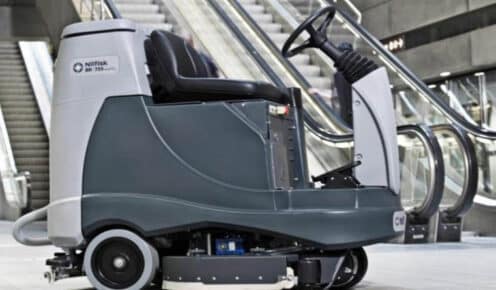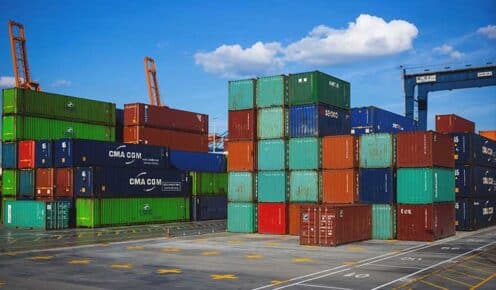For many industrial businesses, buying a machine or piece of equipment requires a significant investment. To avoid expensive changes or updates, the ideal equipment is something you can use in your operations for a very long time.
Nevertheless, in order to carry out its duties quickly and effectively, any manufacturing organisation needs cutting-edge technology. The following are the most important variables to take into account while selecting the best equipment for your company:
Examine the device’s output
Look at the machine’s manufacturing output in the first place. Think about how well it performs in relation to its price and the utilities it uses. Check to see if the equipment can produce as much as it can while using as little energy as possible. Instead of spending money on utilities and overhead, you should invest in a machine or piece of equipment that will boost your manufacturing operations and output.
For instance, you will pay more than just the cost of materials and labour if you buy equipment that uses a lot of gas or water to produce the desired quantity of goods. You may need to increase your prices or decrease your goal output in order to incorporate utilities in your final manufacturing cost.
Calculate the amount of energy it uses
Another important factor to take into account is power utilisation. It is more cost-effective to use machinery that uses less energy if your small firm has recently erected a new warehouse. As a workaround, get a machine that needs a domestic phase to operate. Commercial power is expensive to get. You won’t need to be concerned about fluctuating energy prices if you purchase the appropriate equipment. Changes in power use are the main factors affecting these rates.
Calculate the overall amount of space needed
Always take into account how much space it will need before buying any equipment. The majority of manufacturing or industrial equipment needs more than just a place to be installed. Consider how much additional space it needs to function properly and whether it needs human assistance.
Knowing the exact area size needed can help you plan your factory layout effectively and prepare for changes or adjustments during operation. Make sure you measure precisely before purchasing.
Consider the necessity of employee involvement
Find out how much worker involvement the equipment requires. Three or more operators may be required to operate some semi-automatic machinery. On the other hand, a single person may easily operate a number of fully automatic equipment.
By recognising this kind of need, you might discover additional costs, such as training for individuals in charge of the operation’s equipment selection. Select a machine that requires the fewest workers.
Do your research and compare prices
As you are aware, industrial machinery comes in a range of prices. The complexity and number of features, the quality of the production materials, the supplier or brand, and other factors may all have an impact on how much they cost. When purchasing, avoid picking the cheapest choice just because it seems the most useful. Always take into account the rationale for the price.
However, keep in mind that higher costs do not always translate into better quality. To make a more informed purchasing decision, take into account additional factors while comparing prices, such as user reviews and ratings.
Decide whether to purchase a new or used one
Finally, choose between buying new or used equipment. Everyone responds differently. However, evaluating your business circumstances, especially your budget, is the simplest way to pick which one to use. For example, it is less expensive to buy a used gas radiant heater for your warehouse than to buy a new one. Reduced insurance costs and 0% depreciation on new equipments are two other amazing benefits. On the other hand, buying a brand-new heater is a good choice if you want modern technology and a decent, long warranty.
To rapidly determine what works best for your business, ask yourself a number of questions. How much can you spend? What characteristics and capabilities do you favour? What choices do you have for vendors? Will you use the tools for on-going production?
Always keep in mind that buying industrial equipment is never cheap. Spend some time carefully weighing your options and concentrating on those aspects that will help your business more than others. You can use the ideas in this article to eventually earn more money.
Choose MVIKAS because…
Businesses may list their goods and services online on the B2B (Business-to-Business Marketplace) portal known as MVIKAS. To find what they’re looking for, customers can then search through these postings. The range of services offered by MVIKAS includes product listing, marketing, sales, customer assistance, payment processing, and logistics.
Without an intermediary, we give companies the ability to sell directly to customers. This signifies that the vendor won’t be responsible for commission fees or shipping costs. MVIKAS connects manufacturers and suppliers with clients from the most prestigious industry sectors, including automotive, consumer goods, electronics, food processing, electrical and hardware, etc. One of the B2B platforms that is expanding the quickest in India is MVIKAS. We are a premier supplier of equipment like:
Industrial Machinery and Equipment
Industrial machinery and equipment are those that are used by a maker at a manufacturing facility. Using various material removal techniques and precision machine tools including lathes, mills, handsaws, sanders, CNC machines, and turning centres, machining is the process of shaping and sizing raw materials. Machinery is any mechanical, electrical, or electronic device designed and used to carry out a certain task and produce a particular outcome. Machinery and equipment include things like machinery, tools, vehicles, furniture and fixtures, leasehold improvements, repair parts, tools, and plant. They also include things like office and laboratory supplies and equipment, computer hardware and software, computer networking equipment, engineering and design equipment, test equipment, and so on.
A large variety of products are produced by the machine industry, a sector of the industry, including power tools, diverse machines, household technology, manufacturing equipment, and so forth. Industrial machinery includes, but is not limited to, oilfield and construction machinery that is used in a particular trade or manufacturing. Equipment is often used to describe a group of tools used to accomplish a specific task.
Material Handling Tools
Equipment used to handle, store, manage, and protect materials, commodities, and goods during the production, distribution, consumption, and disposal processes is known as material handling equipment (MHE). The four main categories of handling equipment are transport equipment, positioning equipment, unit load formation equipment, and storage equipment.
Equipment for carrying, storing, controlling, counting, and safeguarding materials at any stage of production, distribution, consumption, or disposal is referred to as industrial material handling equipment. This category includes a wide range of tools, vehicles, storage units, appliances, and accessories.
Four groups of material handling equipment are distinguished as follows:
- Bulk material handling
- Engineered systems
- Industrial trucks, and
- Storage and handling equipment
Material handling tools are designed to decrease material damage and improve quality. By creating effective material mobility, production time is decreased. Boost the management of material flow. Establishing and promoting a secure and risk-free work environment. Transporting, storing, managing, and protecting materials, goods, and products during the production, distribution, consumption, and disposal processes is referred to as material handling.











